Comet C/2023 E1 ATLAS skirts the northern pole for summer northern hemisphere observers.
When it comes to comets, even the best predictions may often betray reality. Bright comets may fizzle as they approach the Sun, and fainter comets that ordinarily wouldn’t warrant a second look many suddenly flare into view.
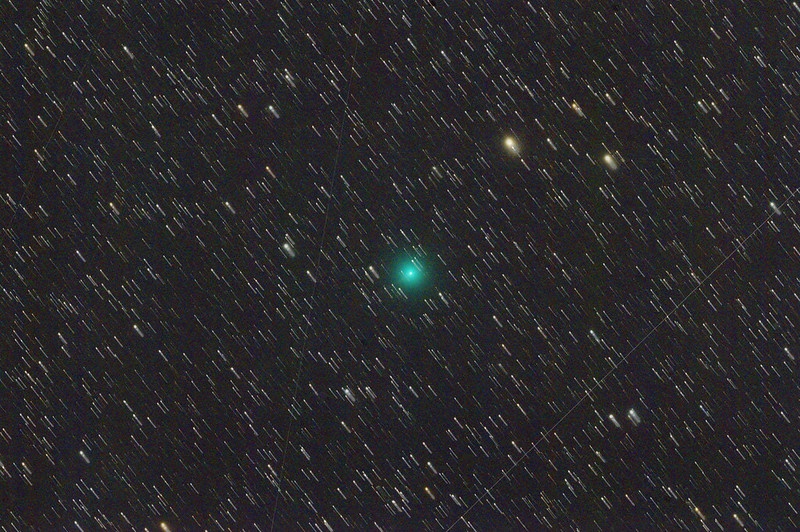
Comet E1 ATLAS from
Thankfully, the former seems to be the case with comet C/2023 E1 ATLAS, which has been over-performing expectations as of late, and recently brightened up into the range of binocular visibility at magnitude +10.
To be sure, the comet will probably top out at +8th to +9th magnitude through July as it reaches perihelion just outside the Earth’s orbit this coming weekend. The comet is well-placed in the night sky for northern hemisphere campers through Canada Day on July 1st and Fourth of July weekend.
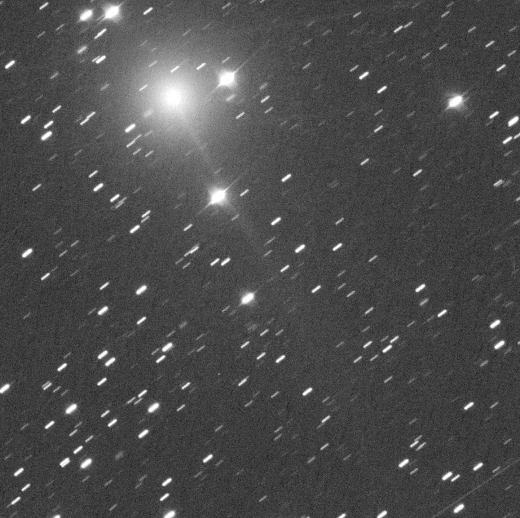
An animation of Comet C/2023 E1 ATLAS from early June, starting to exhibit a short, spikey tail. Image credit and copyright: Michael Jager.A Unique Orbit
Comet C/2023 E1 ATLAS was discovered by the Asteroid Terrestrial-Impact Last Alert System (ATLAS) station based at Sutherland, South Africa on the night of March 1st, 2023. At the time, the comet was a faint +19th magnitude object, gliding through the constellation Virgo.
The orbit of the comet is an interesting one, with a 38 degree inclination relative to the ecliptic. On just an 85 year orbit, the comet reaches aphelion in early 2066 at 37.7 Astronomical Units (AU) from the Sun, just outside the orbit of the planet Neptune. In fact, the planet seems to share a 2:1 orbital resonance with the comet, as it completes two orbits to every one for Neptune. Though the comet currently has a ‘C’ designation for a long period (versus periodic) comet, that’ll probably change, as 85 years is much less than the 200-year orbital period cutoff defining the two categories.
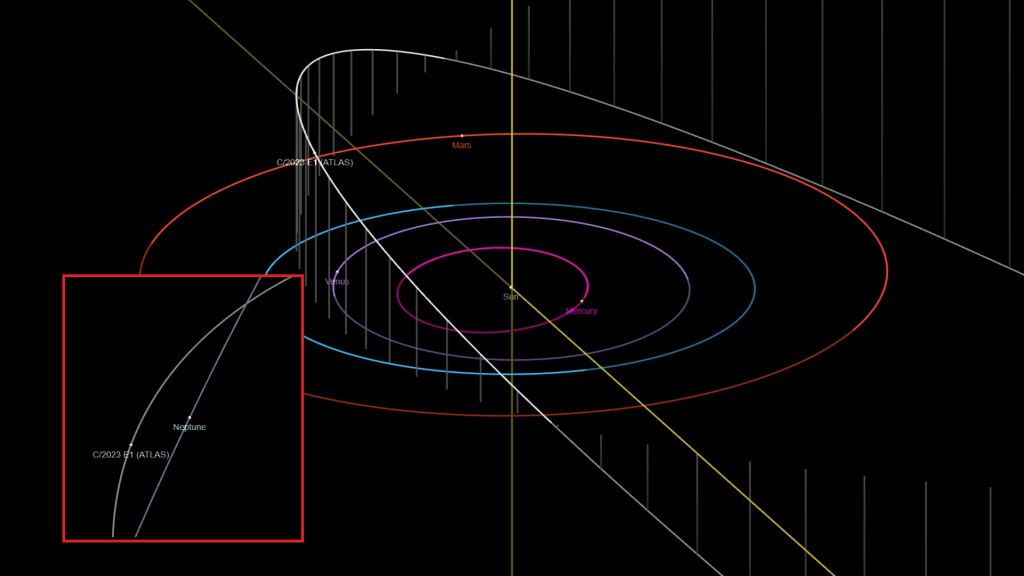
The passage of comet E1 ATLAS through the inner solar system, along with its 2066 passage near Neptune (inset). Credit: NASA/JPL.The 2023 Apparition for Comet E1 ATLAS
It’s rare to see a new short-period comet of note; most of the major ones such as 1P/Halley or 2P/Encke have already been found over the centuries. July is the key month for comet E1 ATLAS, as it starts off the month high to the north in the constellation Ursa Minor, and crosses through Draco and into Cepheus towards closest Earth approach in mid-August. This favorable 2023 apparition may be why the small comet has eluded detection for so long.
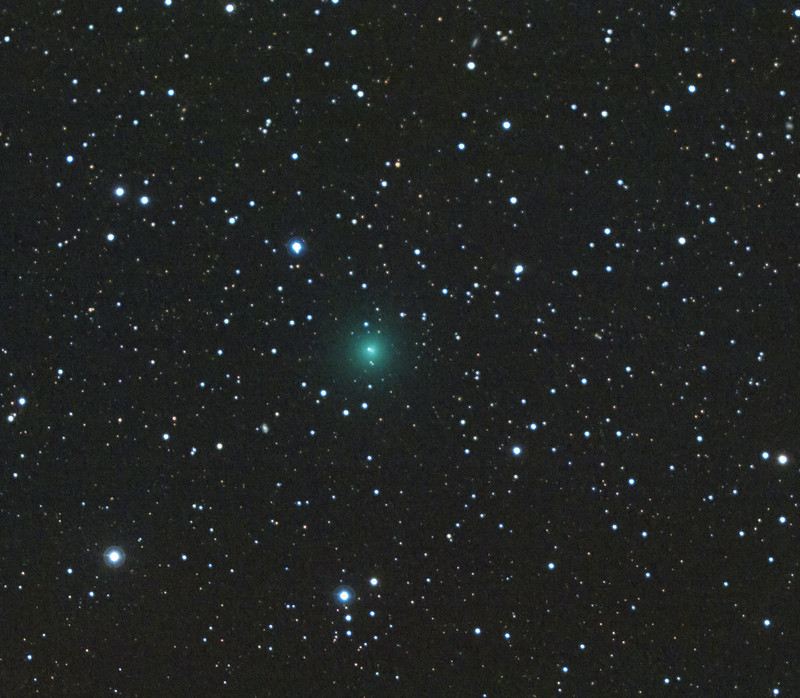
Comet E1 ATLAS from June 9th. Image credit and copyright: Eliot Herman.Comet E1 ATLAS Through July and August
Here are key celestial dates with destiny for Comet C/2023 E1 ATLAS:
July 1st – Reaches perihelion, at 1.027 AU from the Sun.
(Full Moon July 3rd)
July 8th – Reaches maximum northern declination, just nine degrees from the north celestial pole.
July 9th – Passes just over one degree from the +4.2 magnitude star Epsilon Ursae Minoris.
(Last Quarter Moon July 10th)
July 14th – Crosses into the constellation Draco the Dragon.
(New Moon July 17th)
(First Quarter Moon July 25th)
July 29th – Crosses into the constellation of Cepheus the King.
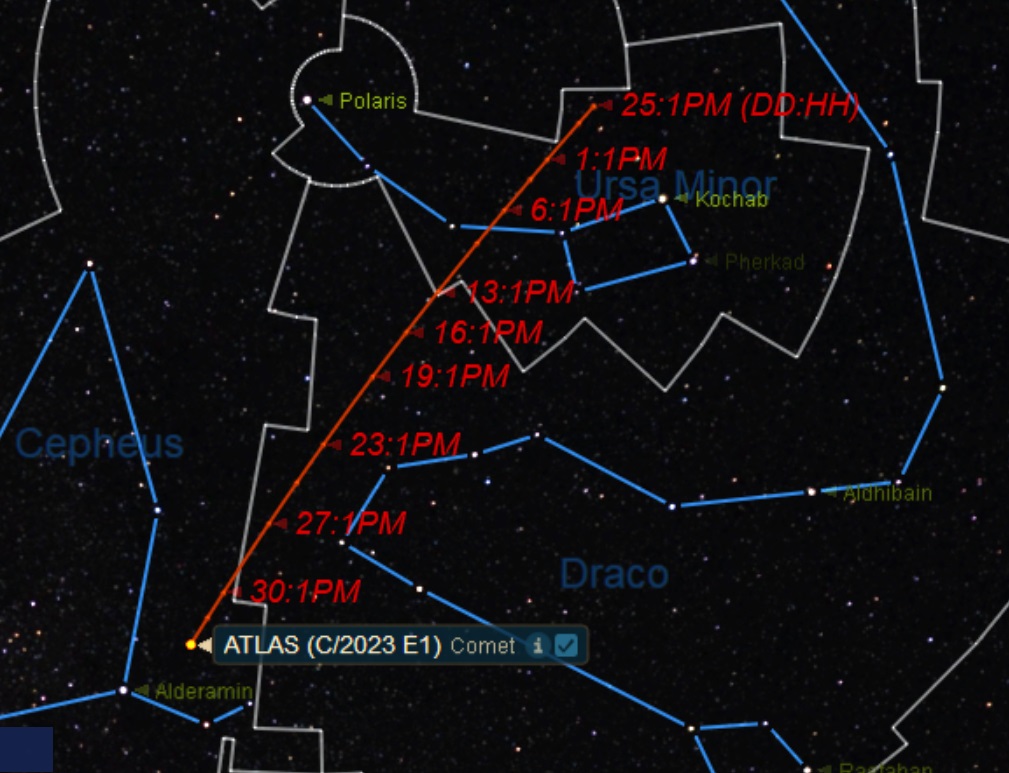
The July passage of Comet E1 ATLAS through the sky. Credit: Starry Night.
(Full Moon August 1st)
August 1st – Drops back down below +10th magnitude?
(Last Quarter Moon August 8th)
August 9th – Crosses into the constellation Cepheus.
August 10th – Crosses the galactic equator southward.
(New Moon August 16th)
August 18th – Passes closest to the Earth, at 0.375 AU distant.
August 22nd – Crosses into the constellation Pegasus
(First Quarter Moon August 24th)
August 29th – Reaches ecliptic opposition, 180 degrees opposite versus the Sun.
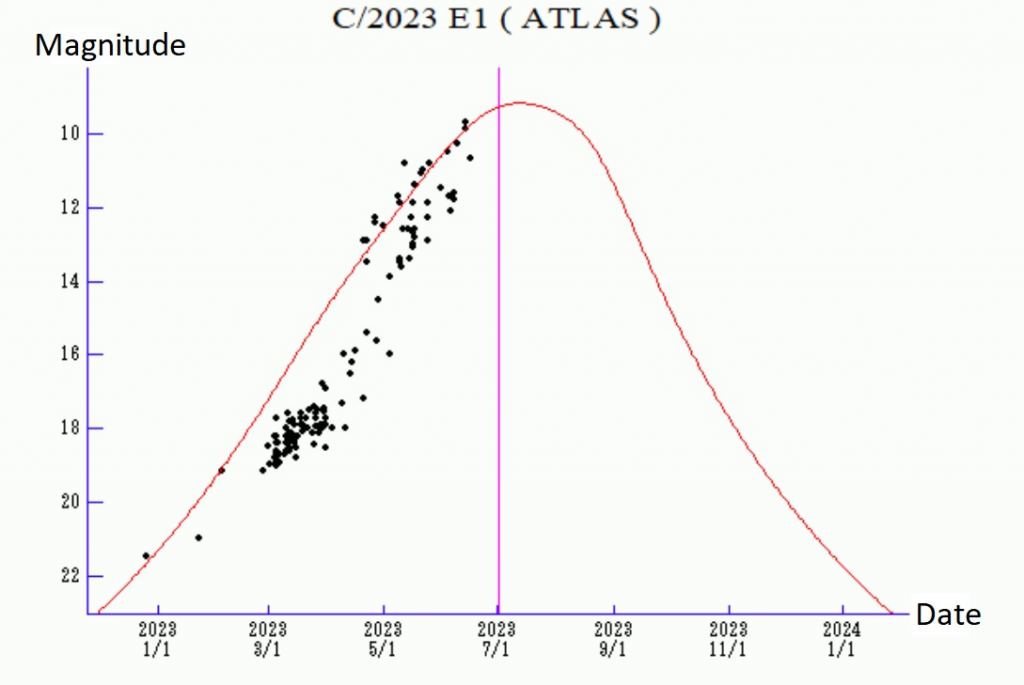
The projected light curve for comet E1 ATLAS. The black dots represent observations, and the vertical pink line marks perihelion. Credit: Seiichi Yoshida’s Weekly Information About Bright Comets.Blame it on the Moon
Unfortunately, the Moon reaches Full phase on July 3rd hampering deep sky observations, Though New phase on the weeks surrounding July 17th should be ideal to track the comet down. Look for the comet as a small ‘fuzzball’ similar to a globular cluster that stub𝐛𝐨𝐫𝐧ly refuses to snap into focus.
If you have a chance, be sure to check out C/2023 E1 ATLAS… Remember, comets often fail to read prognostications, and can over-achieve versus expectations!





